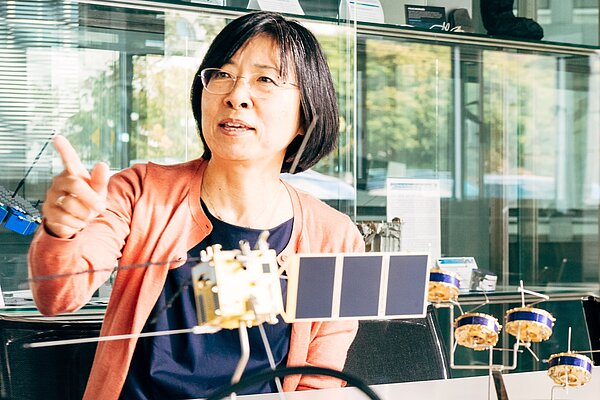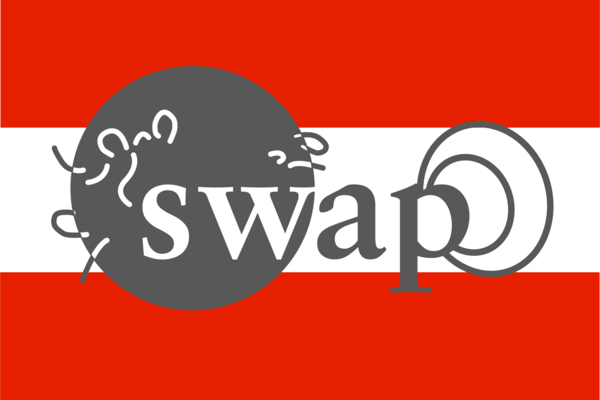Cluster

To study the effects of the sun on the lives of the inhabitants of the earth in high temporal and spatial resolution, the ESA has launched the Cluster Satellite Quartet in 2000. The launch took place in pairs on 16 July and 9 August on board two of Soyuz launchers from Baikonur.
The four identical satellites fly in the form of a triangular pyramid, enabling a three-dimensional study of solar-terrestrial interactions. Each probe has the same measuring instruments on board so that the data of the spacecrafts can be compared with each other.
The trajectory lead over the polar areas, with the nearest point (perigee) at 19,000 km and the most remote point (apogee) at 119,000 km from the center of the earth near the equatorial plane. The distances between the satellites can be varied from a few hundred to a few thousand kilometers. The spacecrafts fly through the most interesting areas of near-Earth space: the area dominated by the Earth's magnetic field (the magnetosphere), but also regions of the solar wind (the stream of ionized matter constantly emanating from the Sun) and especially the boundary layers between these areas. The simultaneous measurement at four points enables the separation of temporal and spatial variations in the measurements.
The payload of each satellite consists of eleven scientific instruments. IWF is involved in three instruments aboard Cluster: ASPOC controls the electrical charge of the satellite, FGM measures the earth's magnetic field and EDI measures the electric field. In addition, IWF is Co-Investigator for PEACE and CIS, instruments for measuring electron and ion spectra.
For the exchange and distribution of the data, a system of seven national data centers was designed in the early 90s of the last century. Bandwidths were small then, the data volumes high for those times, so the distributed system should ensure a prompt access for the scientific community. The Austrian Cluster Data Center (ACDC) was established by IWF and is still in operation.
Further information on Cluster can be found at ESA.


